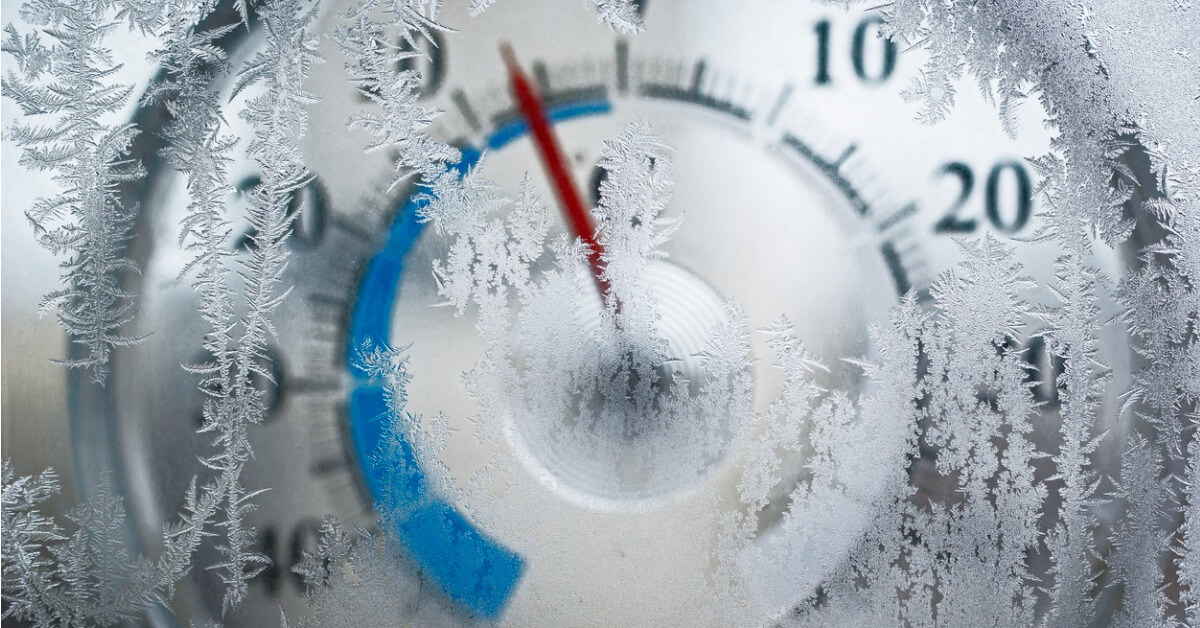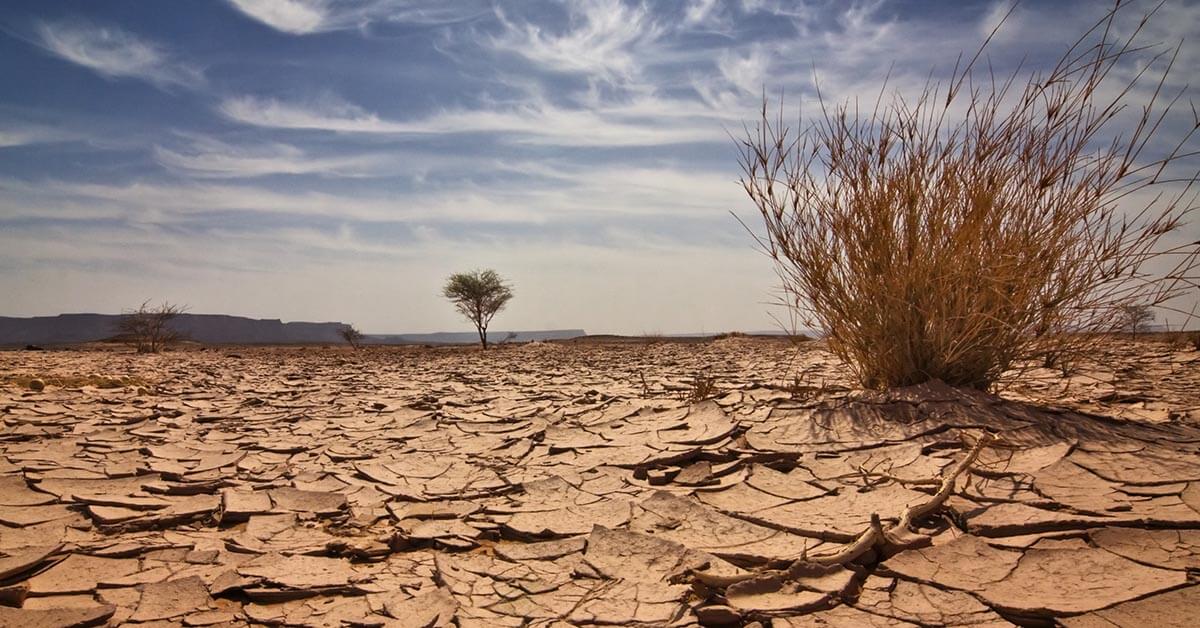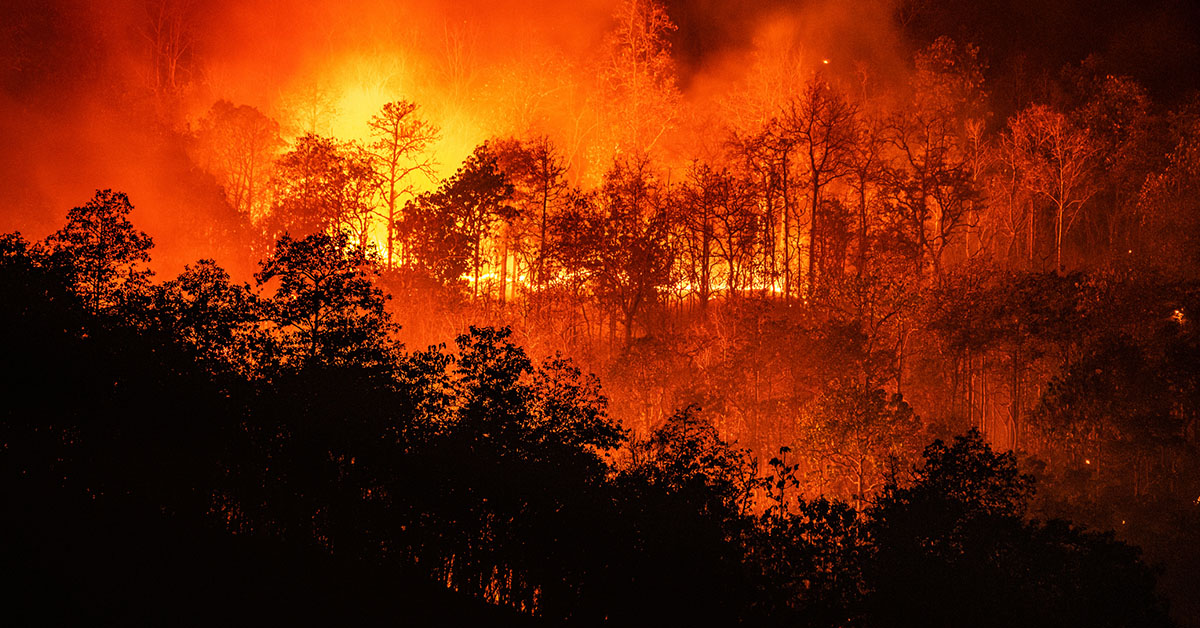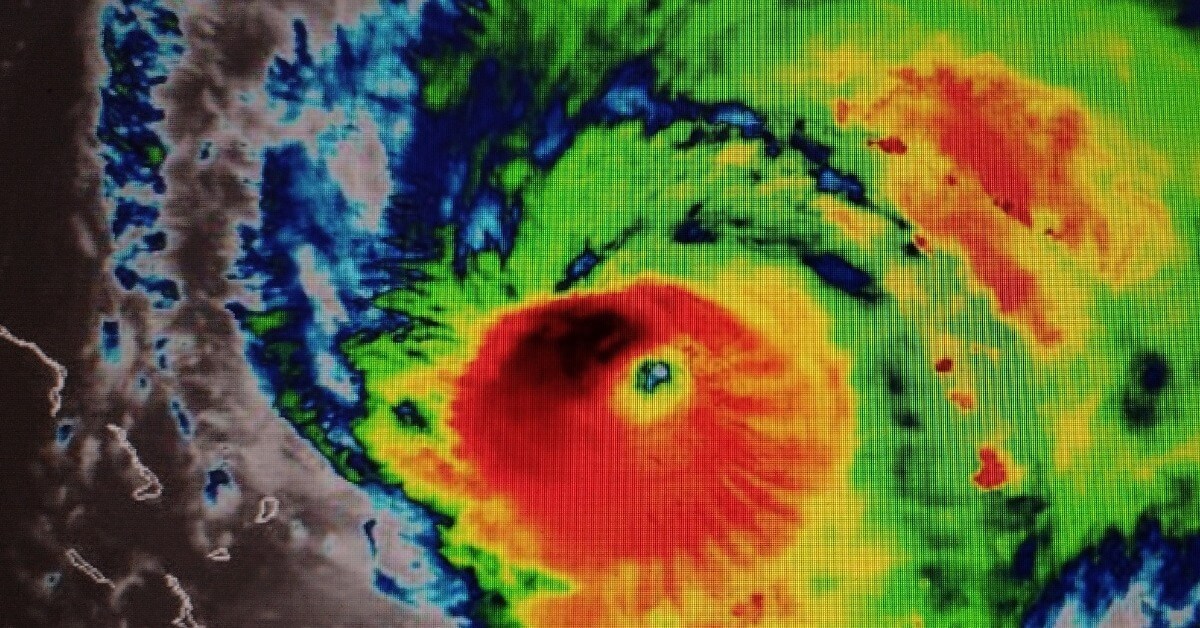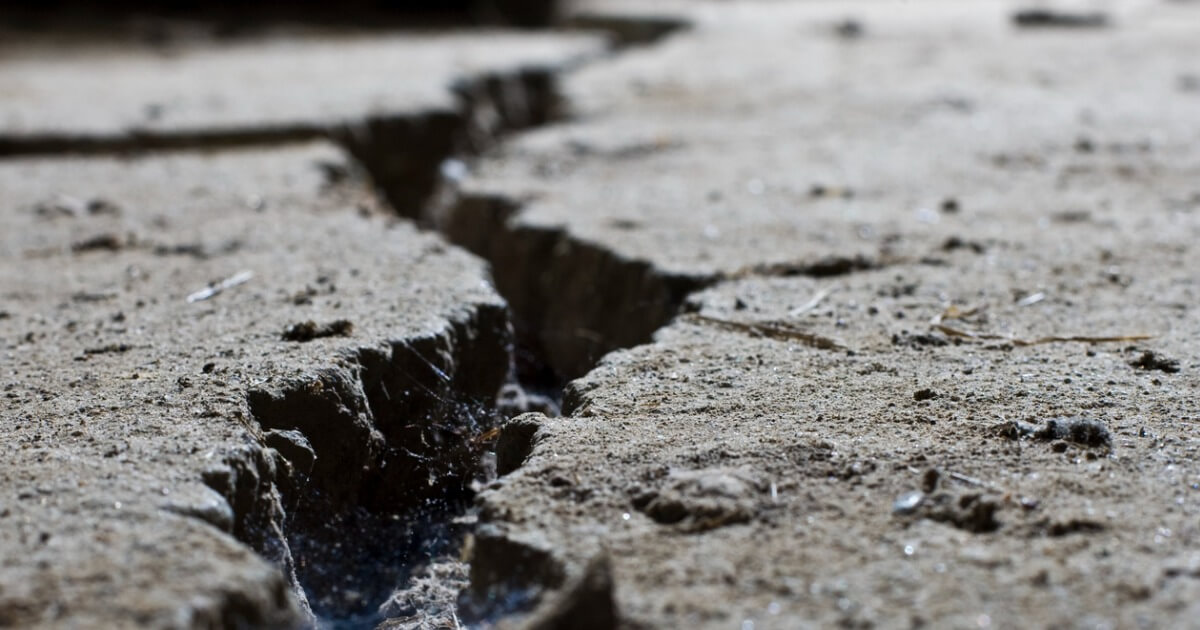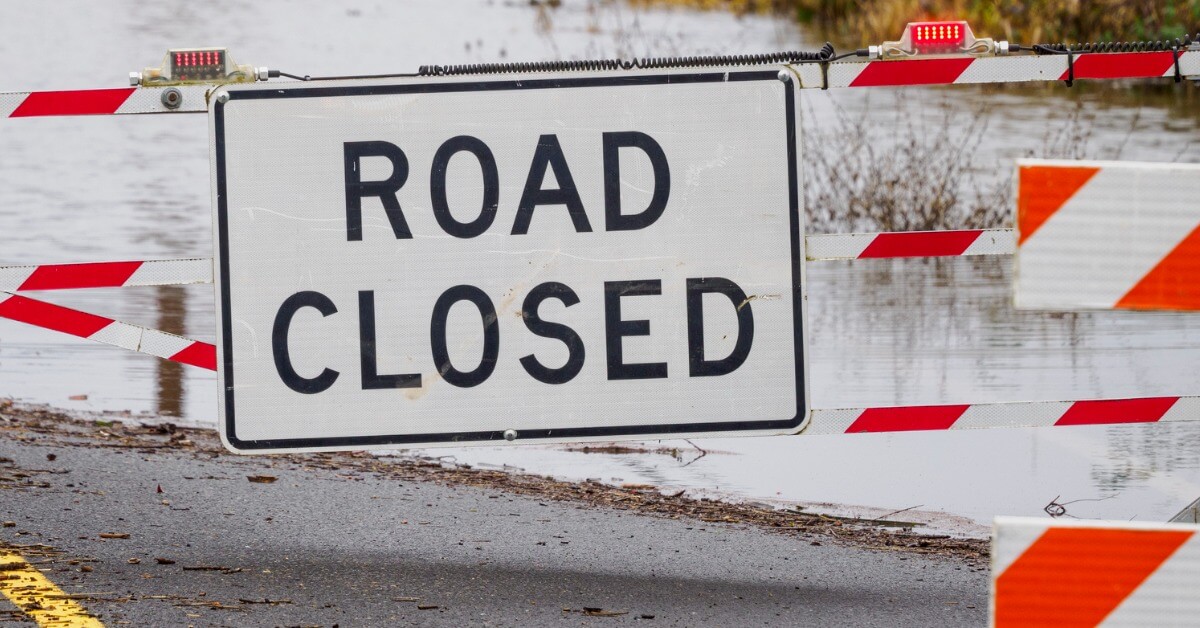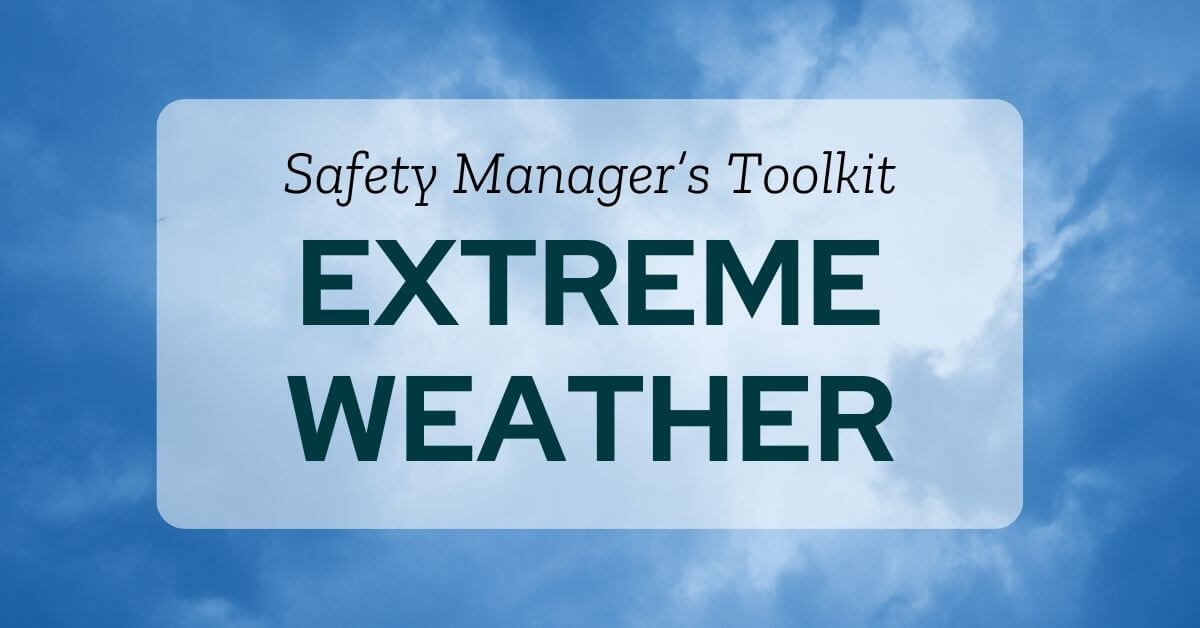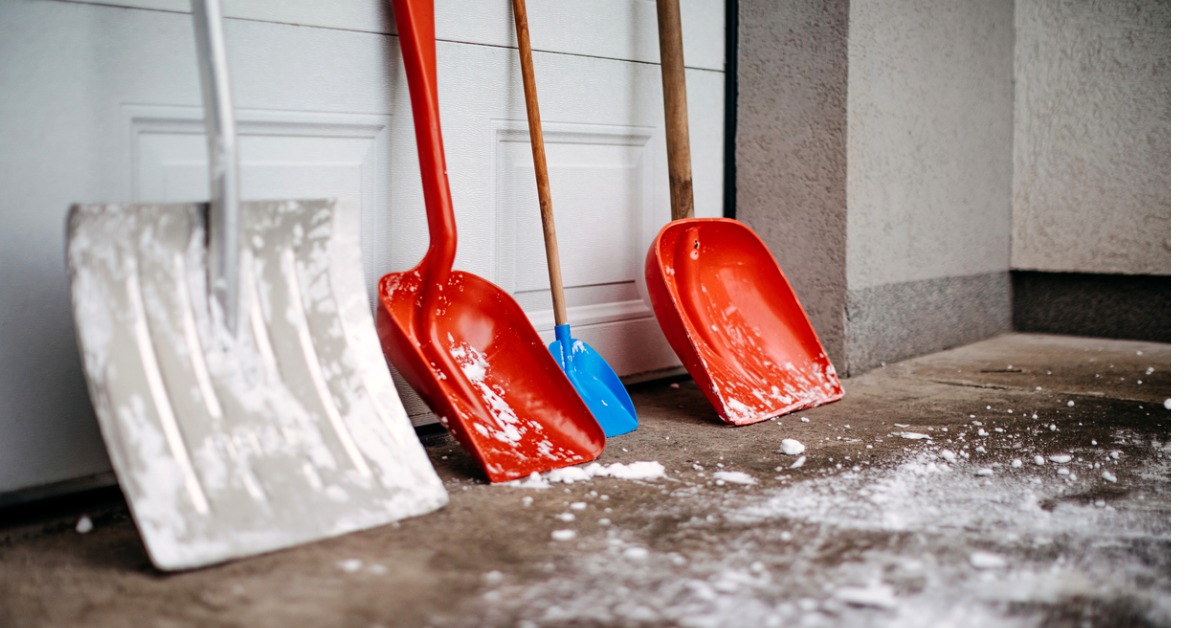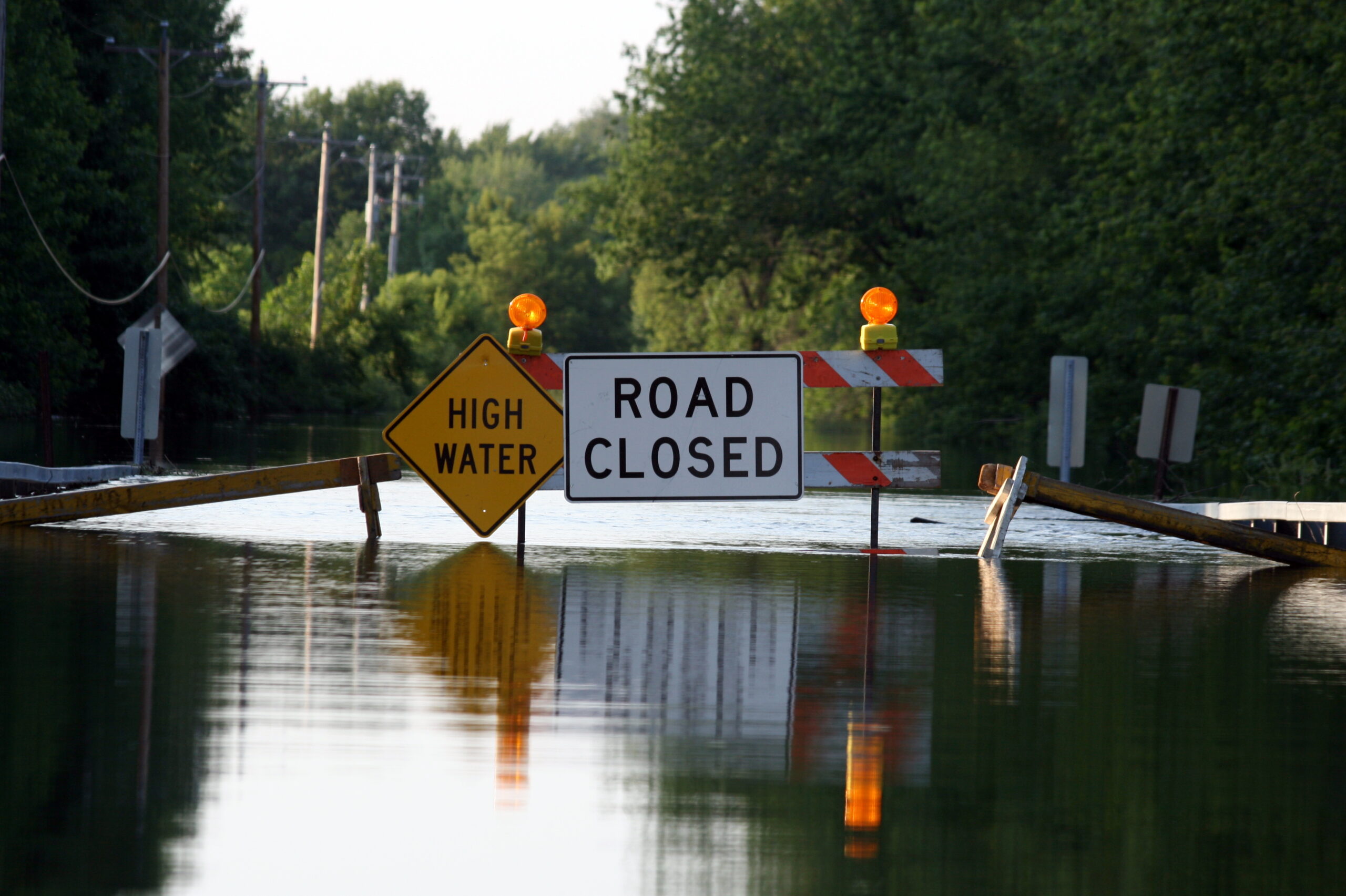Extreme weather events are becoming increasingly common across the globe, causing widespread damage and disrupting daily life. Summer’s here – which means it’s time to make sure we’ve got our extreme heat safety plans in place.
So how do you prepare for high summer temps in your facility? There are three keys to reducing the impact of summer heat on your workforce. Let’s follow the three Ps we use for all extreme weather preparation:
Let’s dive into these three Ps
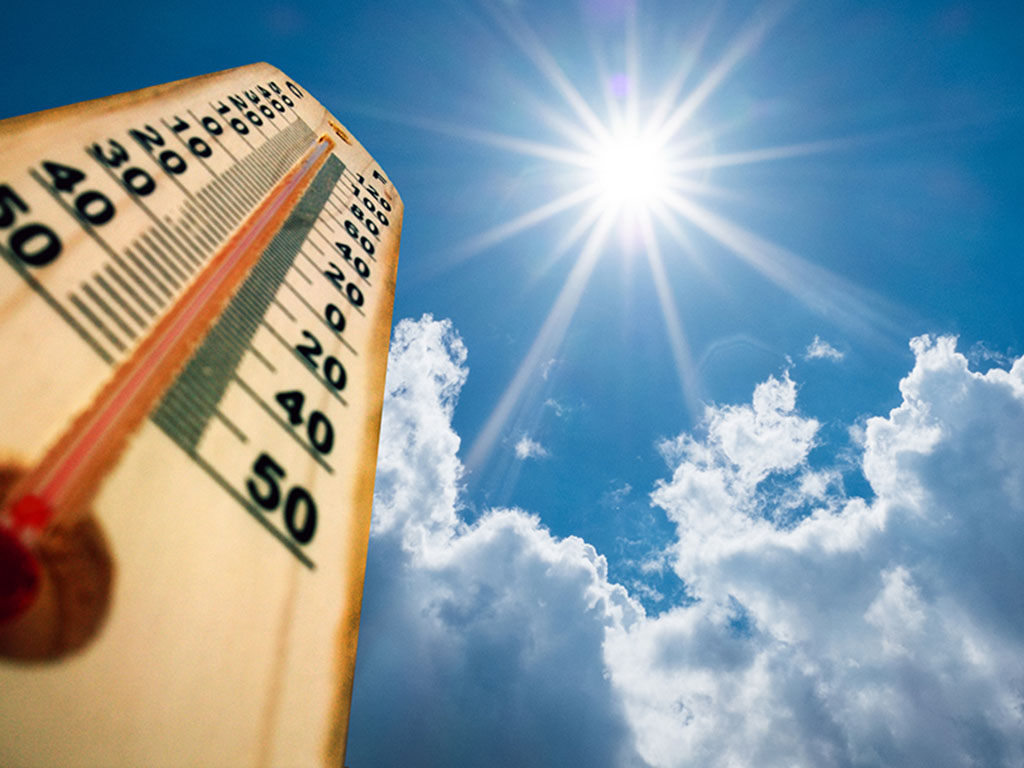
The First P
PLAN for Extreme Heat Safety
Why should we plan for extreme heat?
According to NOAA, the earth’s average surface temperature has already risen about 2 degrees Fahrenheit since the late 19th century. Scientists say the increase is driven by greenhouse gas emissions that trap heat in earth’s atmosphere, which fuels more extreme weather.
NASA notes that most of the warming occurred in the past 40 years, with the seven most recent years being the warmest. The years 2016 and 2020 are tied for the warmest year on record.
Overnight temperatures are getting warmer. The Weather Channel notes that climate change is making it harder for the earth to cool at night, leading to higher overnight temperatures. These warmer nighttime temperatures are a large contributor to the increase in extreme heat waves.
How do we plan for these events?
OSHA’s got some great guidance when it comes to preventing heat illness.
Understand Heat Priority Days
OSHA’s National Emphasis Plan on Heat authorizes conducting pre-planned inspections of high-risk worksites on “heat priority days”
These are days where the heat index—or “feel like” temperature—is expected to be 80 degrees Fahrenheit or higher. Now’s a great time to study up on how the heat index works.
The Second P
PREPARE for Extreme Heat Safety
Get familiar with OSHA’s National Emphasis Plan on Heat Illness Prevention
While the NEP on Heat Illness Prevention is in place now, OSHA is working or codifying it into a permanent rule. With the wheels in motion already, it makes sense to have your programs in place before the fines start rolling in.
The current NEP authorizes OSHA to conduct pre-planned inspections of high-risk worksites on “heat priority days” where the heat index—of “feel like” temperature—is expected to be 80 degrees Fahrenheit or higher.
Develop your heat illness prevention plan
Just like your emergency response plan, your heat illness prevention plan helps you lay out your plan of attack well before the temperature starts rising. OSHA recommends your plan cover topics like these:
- Who will provide oversight on a daily basis?
- How will new workers gradually develop heat tolerance?
- How will you ensure temporary workers, who may be more susceptible to heat and require closer supervision, are taken into consideration?
- Do you have plans for workers returning from extended leave (typically defined as more than two weeks) as they may be at increased risk?
- How will the employer ensure that first aid is adequate and the protocol for summoning medical assistance in situations beyond first-aid is effective?
- What engineering controls and work practices will be used to reduce heat stress?
How will heat stress be measured? - How to respond when the National Weather Service issues a heat advisory or heat warning?
- How will we determine if the total heat stress is hazardous?
- What training will be provided to workers and supervisors?
Consider both indoor and outdoor workers.
Heat illness can anywhere. Many of the same precautions as outdoor environments apply to indoor settings.
Based on where you do business, your organization may be on the hook for indoor as well as outdoor conditions. California, for instance, is finalizing a heat illness prevention rule that would apply to indoor work areas where temperatures exceed 82° F.
The Third P
PRACTICE Responding to Extreme Heat
Who is in charge?
Developing a heat illness prevention team is a great way to designate people within your organization as extreme heat safety leaders. Members of the team would be responsible for reporting, monitoring conditions, managing response protocols, implementing controls at each risk level, and ensuring the availability of supplies and equipment.
Educate your employees
Employees should be trained to recognize symptoms of heat-related illnesses, on what to do when symptoms are observed, and on site-specific risks and controls. In addition to their personal heat illness prevention choices, such as water intake and clothing, members of your workforce also need to be aware of their individual risk factors, including age, medications, obesity, diet, smoking habits, and medical conditions.
Check out a sample of KPA’s Heat Stress Online Training
Understand the 4 Types of Heat Illness
OSHA and the CDC categorize heat illnesses into four types. Each has its own symptoms and require proper first aid.
Extreme heat can be challenging, but we can prevent heat illness with a solid emergency action plan.
By staying informed and taking proactive steps, you can keep your workforce safe and healthy on these high-heat days.
Whether it’s by regularly checking the heat index or running drills, there are plenty of ways to prepare and prevent heat illness.
Subscribe to the blog to get best practices for responding to extreme weather events. We’ll be posting a new article monthly.
With a little preparation, we can face any weather challenge with confidence.
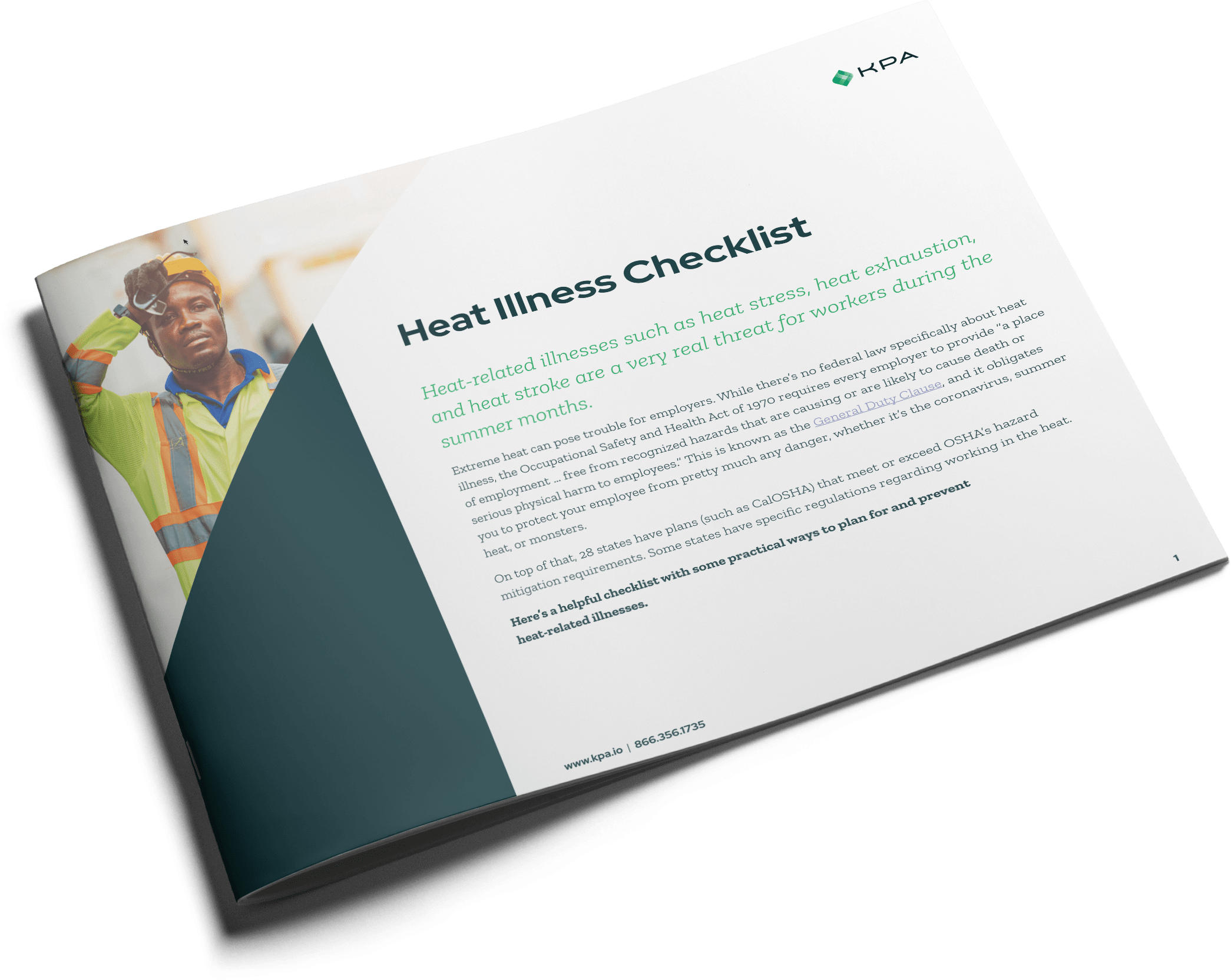
Are you doing enough to keep your employees safe from summer heat? Get this helpful checklist with some practical ways to plan for and prevent heat-related illnesses at your business.
Read the Latest Extreme Weather Articles
Related Content
Explore more comprehensive articles, specialized guides, and insightful interviews selected, offering fresh insights, data-driven analysis, and expert perspectives.
